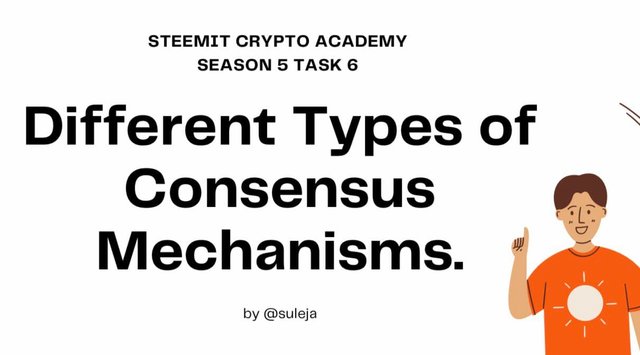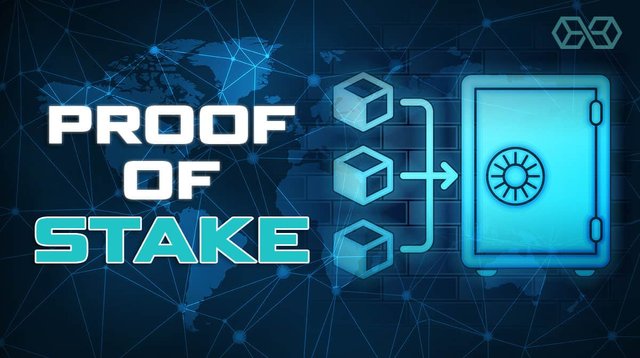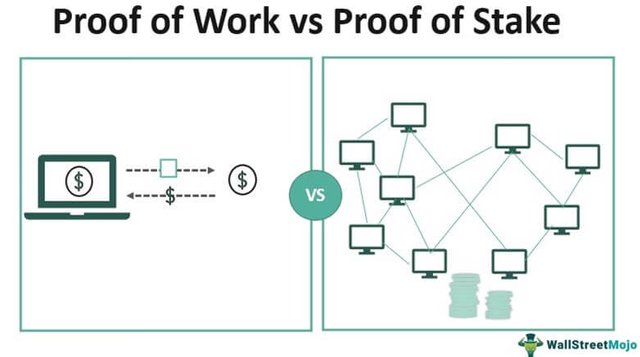Hello crypto enthusiasts, I am back again with this Season 5 Homework task 6 post for professor @sapwood. The task is all about different types of consensus mechanisms, and I will take my time and answer the questions below.

Image created on canva

(1) What is the difference between PoW & PoS? Advantages & Disadvantages? Which one is better in scaling Capacity? Examples?

Proof of work

source
Proof of work (PoW) is the underpinning system used to maintain the bitcoin blockchain. Proof of work provides an agreement to the Bitcoin network and establishes Bitcoin as a feasible decentralized currency. Proof of work was adopted by Satoshi Nakamoto to help establish Bitcoin as a digital currency that will endure for centuries. PoW allows miners to secure the Bitcoin network, collect sale freights, and make benefactions to the community by including blockheads into the sanctioned blockchain. As similar, miners are critical to the security of the Bitcoin network. Still, mining can be expensive and PoW's relative success depends on whether there is a profit motive for mining. A negative free market means miners will stop participating in the network. This leaves only small pools with low computational power and large computational power (GPUs) in control of most of the mining power. Still, it has been shown that GPU-based PoW algorithms have significantly lower centralization issues than CPU-based PoW algorithms.
Proof of Stake

source
Differences

source
The major difference between proof-of-work (PoW) and proof-of-stake (PoS) is that in PoW, all the coins are mined by users while in PoS all the coins are minted by only the trusted third parties. Proof of work Uses energy-intensive calculations to solve what we know as cryptographic puzzles to verify transactions on the blockchain while Proof of stake needs trusted third parties to randomly select transactions on the blockchain and also publish them on the blockchain. It takes some time before a block is published to the whole blockchain. It also allows a share of all coins to be given as rewards after validating transactions. In proof of stake, anyuser can create new coins easily by investing their own asset/money into the pool, unlike in the proof-of-work where users must divert their energy into mining to ensure the validation of transactions. This difference sets a path to higher levels of decentralization in PoS compared to PoW. Proof of stake is less risky compared to proof of work because anyone can take part in it, but mining requires a large capital to do and only few people can do it. There is less risk that spiteful users can launch about 51% attacks and monopolize mining power in proof-of-work. Even though performing an attack on PoS is difficult, still there is no close level of difficulty for a miner to mine more than 50% of the blocks on the chain. Therefore, miners need to constantly improve their algorithms to maximize profits and minimize costs.

Proof-of-Work (PoW):
See three advantages/merits and disadvantages/demerits of PoW in the table below;
| Advantages | Disadvantages |
|---|---|
| PoW makes the decentralization of cryptocurrencies in blockchain technology. | It's slow when processing transactions and it is also expensive. |
| PoW is very difficult for cybercriminals to attack/hack because of its strong security. | There is high energy consumption in PoW. |
| Miners earn cryptocurrency rewards and also receive a share of transaction fees. | Expensive types of equipment are used to mine in proof-of-Work. |
Proof-of-Stake (PoS):
See three advantages/merits and disadvantages/demerits of PoS in the table below;
| Advantages | Disadvantages |
|---|---|
| The energy efficiency of the Proof-of-Stake system is better compared to Proof-of-Work which means it doesn't require excess computational equipment. | An increase in the high number of validators tends to make the network becomes slower. |
| POS uses lesser hardware compared to POW but ensures more users participate in the process of consensus. | The level of security in PoS is lower than the level of security in PoW. |
| It is fast in the confirmation of transactions. | Most users are not encouraged to take part in the PoS platform because of the technological and technical barriers that come with understanding blockchain and also being cryptocurrency users/owners. |

Both Proof-of-Work and Proof-of-Stake mechanisms use hashing functions to secure the ledger. Hashing functions require memory, disk, and electricity to be maintained to produce results. Proof-of-Work miners must be competitive with other miners and keep a good percentage of their time invested to maintain their system’s network health. Thus, mining has significant scaling costs. Similarly, staking has also high scalability costs. To enable faster block creation times, there is an incentive to rent hash power from those who already have it, to provide them with revenue for running the network. Renting hash power increases the security of the network by more than 100x while lowering the costs of its resources.
Staking creates fresh challenges for bumps due to its needed offline setup and clumsy operations. a relief approach is proposed which uses low- cost hosting results and tackle bias that are operated ever by computer software that facilitates agreement mechanisms like PoW and PoS. It offers advanced security at lower resource costs than the two mechanisms mentioned over. This result could help further polarize the net by allowing druggies to share in networks using only affordable bias, with no minimal number of factors, and without taking internet access. The implicit benefits are immense for little businesses, consumers, potterers, artists, growers, and seminaries. It can indeed potentially change the economics of operating an internet business by allowing all profitable actors to use these systems with no original investment or outflow. So, incipiently, I have got learned that both Proof-of- Work and Evidence-of- Stake work forfeiture but they're doing include certain constraints that bear to be addressed before wide relinquishment can do. That led me to the result that PoW is stylish in terms of Scaling capacity because it requires lower mining investment but it comes with much advanced functional costs which could beget smaller companies joining in thereon and also at how the slower rate of scaling compared to PoS.

A very big thank you to professor @sapwood for this impactful lecture on different types of consensus mechanisms. It is important for traders to know about the different types of consensus mechanisms, and how they work.

Cc;
@sapwood